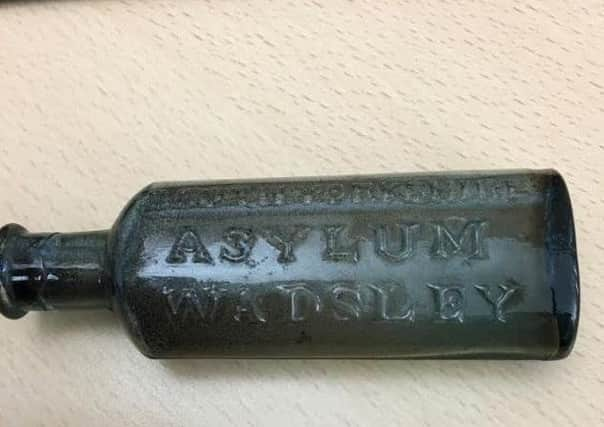Riddle of '˜asylum' bottle found in roof


The five-inch long bottle came from the old Middlewood Hospital at Wadsley and probably dates from the 1870s, but mystery surrounds how it ended up high in the roof of the old parish church.
There is quite a lot of evidence that objects such as shoes, bottles and even mummified cats were walled up in roofs, chimneys and walls in the past.
Advertisement
Hide AdAdvertisement
Hide AdIn folklore they were placed there to protect buildings from evil and as counterspells against illness that some believed was caused by witchcraft.
In London many examples of ‘witch-bottles’ or bellarmines, dating from the 17th century, have been found buried in ditches and streams or under the hearths and thresholds of houses.
Some contained pins and nail clippings and there is evidence from oral traditions that some of these were heated over a fire to help cure people who it was believed were bewitched.
Later in the 18th and 19th centuries cheap glass bottles were used for the same purpose.
Advertisement
Hide AdAdvertisement
Hide AdThe bottle found in the cathedral roof still contains its cork so it would be worth checking inside to see if any material had been concealed as part of the ritual.
The fact this bottle came from a former psychiatric hospital strongly suggests it was placed there for magical purposes.
If so it would have made an interesting exhibit in the History of Magic exhibition at the City Library.
But it is also possible the bottle was intended as a time capsule or was placed there as a joke by a builder.
Advertisement
Hide AdAdvertisement
Hide AdIf my theory is correct, the fact that it was found in a Christian church is no surprise as there is lots of evidence that superstitious practices continued, sometimes under the noses of the church authorities, until comparatively recent times.
Indeed visitors to the Lady Chapel of the cathedral can admire some fine 15th century carvings depicting the Green Man and Sheela-na-gig, both of which are believed to represent pagan deities.
Dr David Clarke
Sheffield Hallam University